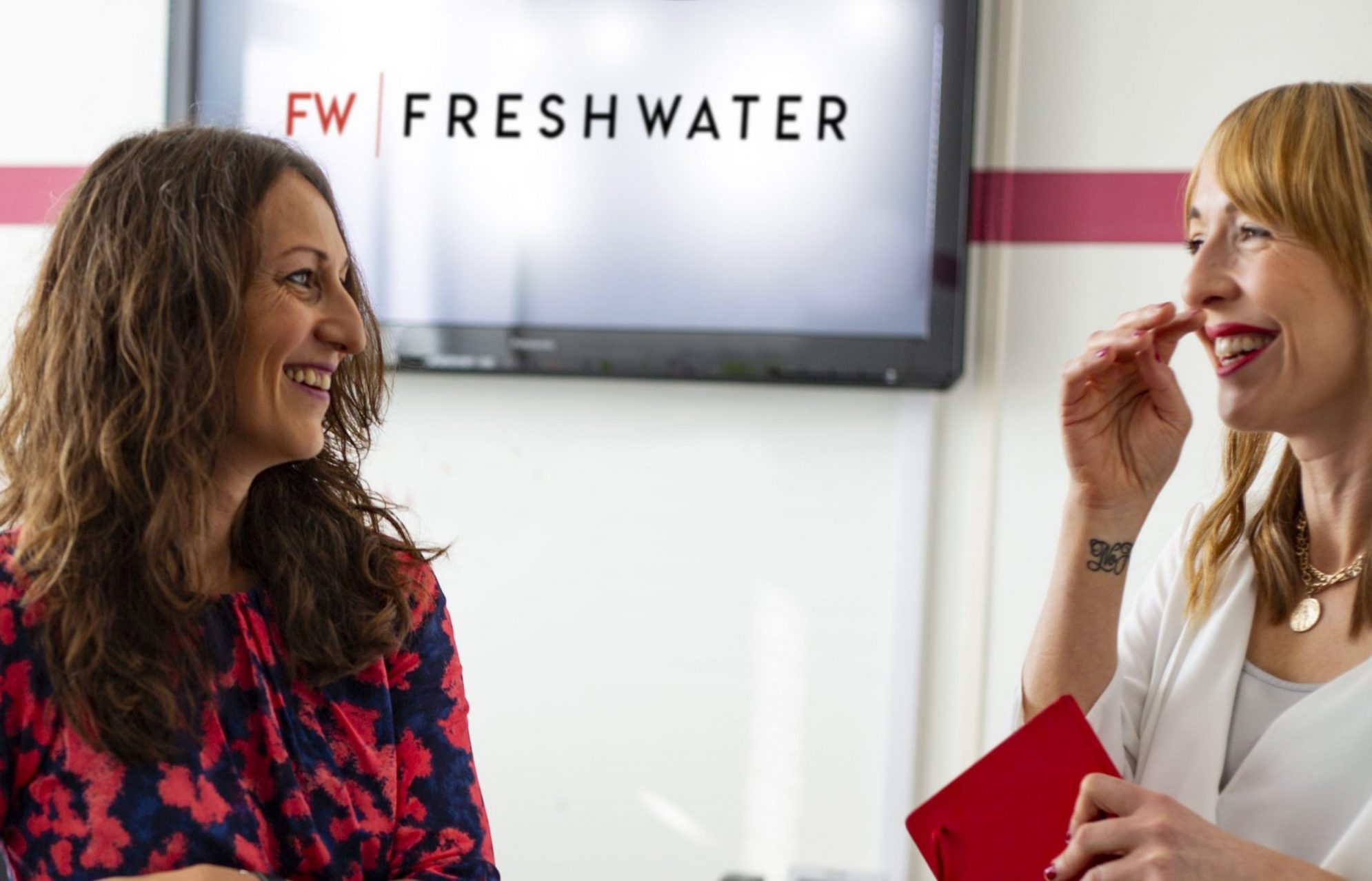
Evolution or Revolution? How to approach a company re-brand
When an organisation decides to embark on a ‘re-brand’, it is not a decision that should be taken lightly. A brand is far more than just a logo on a piece of stationery. It embraces a company’s vision and values, helps it to connect and engage with its customers and employees and builds trust, credibility and loyalty.
As an experienced communications agency, Freshwater has helped a wide range of organisations, from start-ups to major household names, to develop and execute effective brand strategies. This often involves re-visiting an existing brand identity with a history, track record and a complex network of inter-connected relationships that shape perceptions of our client’s products and services.
Last year, the tables were turned when Freshwater’s board decided that the time was right to re-evaluate our own brand; to take a look at who we were and where we wanted to be in the future. In effect, it was time to follow our own advice.
When is the right time to re-brand?
There is no ‘user manual’ to tell you when to embark on a re-brand, or when a corporate identity is tired or in need of a facelift. Companies tend to redesign their logos every 10-12 years, on average, but the factors that influence this decision are many and varied.
For Freshwater, the main catalyst was a significant change to the structure of the organisation – in the form of a Management Buyout (MBO) – but there were other drivers too. The agency had evolved, adding additional capabilities and services, winning clients in different sectors and developing specialist expertise in technology-driven areas of marketing communications – and we wanted our new brand to fully reflect this.
How to approach a re-brand
When an organisation decides to embark on a re-brand project, there are some fundamental principles to consider. First and foremost, there needs to be a clear vision as to why the re-brand is needed and what it hopes to achieve. Any organisation that attempts a re-brand without a clear strategy, backed by a strong evidence-base, is likely to be undertaking an expensive and time-consuming exercise that will not necessarily deliver the benefits it seeks.
Effective research takes a ‘warts-and-all’ look at how an organisation ticks; its strengths and weaknesses, opportunities and threats. How do your staff, customers and stakeholders see you? Where do you trump your competitors? What makes you different? A re-brand strategy needs to reflect where an organisation is now, as well as charting a path towards where it wants to be. It needs to be aspirational but also realistic.
With a robust strategy in place, then comes the creativity. Organisations need to define the principles that are going to drive the re-brand and determine the extent to which the brand identity is going to change. Many agree a ‘vision and mission’ and back this up by a series of ‘brand values’ that everyone who represents and communicates on behalf of the organisation is encouraged to adopt.
For Freshwater, these values included ‘achieving collaboratively’ and ‘displaying integrity’; selected to re-enforce the way we assemble teams with the right skills and experience to deliver specific projects or campaigns, work with organisations who do good things and take pride in being honest with clients, while being a fair and ethical employer. Our research highlighted the fact that our staff really care about what they do and genuinely want to make a positive impact – ‘projecting passion’ was chosen as the value that encourages us to reflect that drive and commitment in our work.
Brand guidelines help organisations ensure they are consistently re-enforcing and ‘living’ the new brand. Language, tone of voice, imagery, fonts and colour palettes can all feature, along with a new logo and strapline. Organisations that take this seriously will also invest in ‘testing’ the elements that make up the brand identity with their key audiences – through focus groups, interview panels or online questionnaires – before going live.
Although the new logo may be the first thing that people see – and immediately form an opinion on – for us, it is something we see as just one piece of the jigsaw.
Rolling out a re-brand
Once a logo and brand guidelines have been signed off, in many respects, the hard work begins. If a re-brand is to be truly effective then your people need to walk-the-walk, embrace the principles behind the change and act as brand ambassadors.
Rolling out a new brand can be a huge logistics challenge – changing signage and vehicle livery, overhauling a myriad of print and merchandise items and revamping numerous online and social media channels. However, the real work comes in taking every individual associated with the organisation on the journey. It is only your employees, stakeholders and supporters who can deliver on the promises made by the brand.
In Freshwater’s case, colleagues across the agency played a part in shaping the brand. When it came to implementation, many of them featured in a video that set out to explain and demonstrate the brand values at work; a team was created to ‘champion’ the brand and internal policies and procedures were updated to reflect the new values.
Embarking on a re-brand is a significant investment that can bring huge benefits but is not without risks. However, with good research, clear thinking and a creative approach, it can inspire teams, engage customers and take an organisation to the next level.
This article was written by our Managing Director, Angharad Neagle, and appeared in the Business magazine on 1 May 2019.
Learn more about our brand strategy work here.
